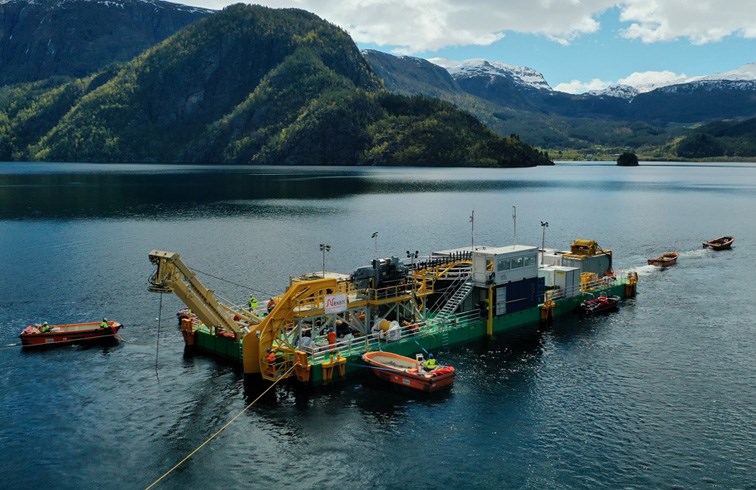North Sea Link passes half way point
Construction of the longest subsea power cable in the world has now passed the halfway point and achieved a major engineering feat to enable Norway’s zero carbon hydro energy to be shared with the UK.
North Sea Link, a joint venture project between National Grid and Norwegian system operator Statnett, is a subsea electricity cable that will connect the UK and Norwegian electricity grids.
Before being able to lay the cable in Norway, the team first had to tackle manoeuvring the cable through a beautiful lake, which cannot be accessed by the size of the vessel, usually required for cable laying.
Instead, the team have transported materials piece by piece to build their own custom-made floating platform. The operation is the first of its kind in this scale in Norway, and the construction of the platform had an average of 25 people working on it daily over the course of 11 days. This unique operation in Suldalsvatnet, marks the start of the cable laying on the Norwegian side.
Working at depths of up to 210 metres, the laying of the 2.8km parallel subsea cables was executed from a 43 x 15 metre platform – equivalent to the size of two tennis courts.
The equipment required to lay the cable was then installed on the platform, and within 12 hours, 150 tonnes of cable were loaded on board. The platform held all the necessary equipment that is usually found on offshore cable laying vessels.
Nigel Williams, Construction Director for National Grid North Sea link said, “The engineering that has taken place to lay high-voltage cables below the seabed is remarkable. The difficult terrain, the depth of the waters, and all in amidst of operating during a pandemic has made it extremely challenging. Nevertheless, we have powered through and remained on track with our project timelines.”
Following this major feat of engineering, the next milestone is to lay the cable out from the fjords in Suldal, to the North Sea this summer. This work will be carried out throughout the remainder of the year, and by 2021 the two parallel 720km cables between Cambois, Northumberland in the UK and Kvilldal, in Norway will have been completed to make North Sea Link the longest subsea power cable interconnector in the world.
By 2021, North Sea Link will be operational and the 1.4-gigawatt electricity interconnector will allow the UK to import enough clean energy to power up to 1.4 million homes.

